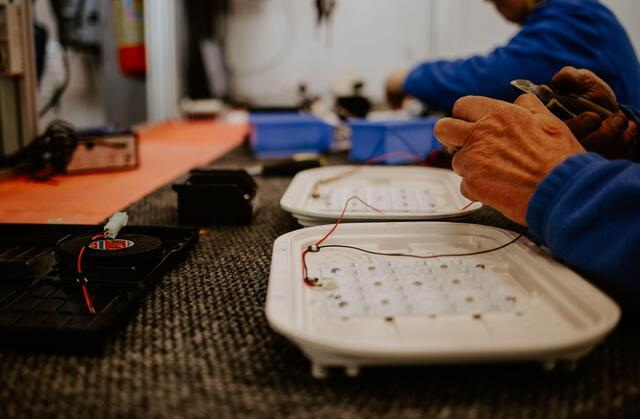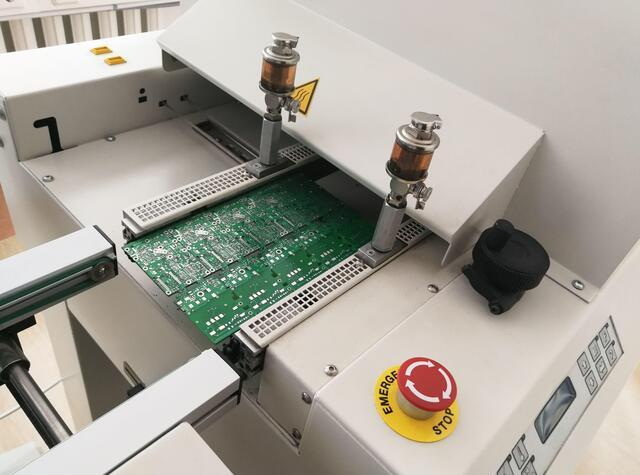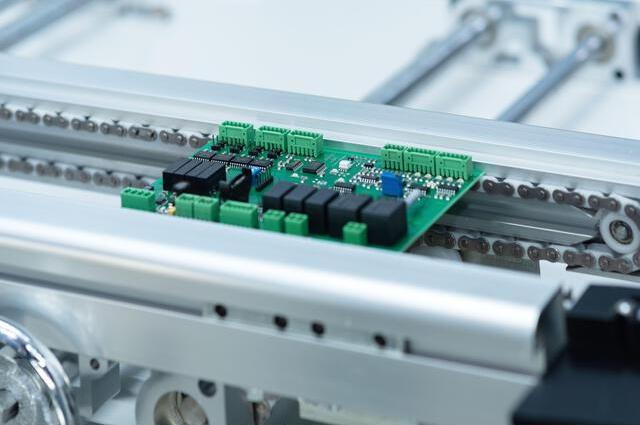Content Menu
● Overview of SMT Technology
● Components of an SMT Full Line Solution
>> 1. PCB Loader
>> 2. Screen Printer
>> 3. Pick-and-Place Machine
>> 4. Reflow Oven
>> 5. Inspection Systems
>> 6. PCB Unloader
● Benefits of an SMT Full Line Solution
>> 1. Increased Efficiency
>> 2. Enhanced Quality Control
>> 3. Flexibility
>> 4. Space Optimization
● Key Features to Consider When Choosing an SMT Full Line Solution
>> 1. Scalability
>> 2. Compatibility with Existing Equipment
>> 3. User-Friendly Interface
>> 4. Maintenance Support
● Implementation Considerations
>> 1. Space Requirements
>> 2. Staff Training
>> 3. Cost Analysis
● Future Trends in SMT Technology
>> 1. Automation and AI Integration
>> 2. Miniaturization of Components
>> 3. Sustainable Practices
● Advantages Over Traditional Through-Hole Technology
● Quality Assurance Measures
● Conclusion
● FAQ
>> 1. What is Surface Mount Technology (SMT)?
>> 2. What are the main components of an SMT full line solution?
>> 3. How does an SMT full line improve manufacturing efficiency?
>> 4. What should manufacturers consider when implementing an SMT solution?
>> 5. What future trends are impacting SMT technology?
● Citations:
Surface Mount Technology (SMT) has transformed the landscape of electronics manufacturing, enabling the production of compact, high-performance electronic devices. An SMT full line solution integrates various equipment and processes to streamline the entire assembly workflow. This article delves into the key features of an SMT full line solution, examining its components, benefits, and considerations for implementation while expanding on relevant aspects to reach a comprehensive understanding.

Overview of SMT Technology
SMT involves the direct mounting of electronic components onto the surface of printed circuit boards (PCBs). This approach contrasts with traditional through-hole technology, where components are inserted into drilled holes. The advantages of SMT include:
- Higher component density: More components can fit on a smaller board.
- Improved performance: Shorter electrical paths reduce signal delays.
- Cost-effectiveness: Reduced material costs and faster assembly times.
SMT has become the preferred method for manufacturing modern electronic devices due to its efficiency and adaptability.
Components of an SMT Full Line Solution
A complete SMT line typically consists of several key components, each playing a vital role in the assembly process:
1. PCB Loader
The PCB loader is responsible for feeding bare PCBs into the assembly line. It ensures that the boards are correctly oriented and aligned for subsequent processes.
2. Screen Printer
The screen printer applies solder paste to the PCB pads where components will be placed. Precision in this step is crucial, as improper paste application can lead to defects in solder joints.
3. Pick-and-Place Machine
This machine accurately places surface mount components onto the solder paste-covered pads on the PCB. High-speed pick-and-place machines can handle various component sizes and types, significantly enhancing throughput.
4. Reflow Oven
Once components are placed, the PCB moves to a reflow oven, where it undergoes a heating process that melts the solder paste, creating strong electrical connections between the components and the PCB.
5. Inspection Systems
Inspection systems, including Automated Optical Inspection (AOI) and X-ray inspection, detect defects in solder joints and component placements. These systems ensure quality control throughout the assembly process.
6. PCB Unloader
After inspection, PCBs are unloaded from the line for further processing or packaging. The unloader ensures that finished products are handled carefully to prevent damage.
Benefits of an SMT Full Line Solution
Implementing an SMT full line solution offers several advantages:
1. Increased Efficiency
The automation provided by an SMT line reduces manual labor requirements and speeds up production times. This efficiency translates into higher output rates and lower operational costs.
2. Enhanced Quality Control
With integrated inspection systems, manufacturers can catch defects early in the production process, reducing waste and rework costs.
3. Flexibility
Modern SMT lines are highly adaptable, allowing manufacturers to switch between different product types with minimal downtime. This flexibility is crucial in responding to market demands.
4. Space Optimization
SMT technology allows for smaller boards with higher component densities, optimizing space in both manufacturing facilities and end-user applications.
Key Features to Consider When Choosing an SMT Full Line Solution
When selecting an SMT full line solution, several critical features should be considered:
1. Scalability
The ability to scale production up or down based on demand is essential for manufacturers looking to remain competitive in fluctuating markets.
2. Compatibility with Existing Equipment
Ensuring that new SMT equipment integrates seamlessly with existing machinery can minimize disruptions during implementation.
3. User-Friendly Interface
A user-friendly interface simplifies operation and training for staff, reducing errors and increasing productivity.
4. Maintenance Support
Robust maintenance support from equipment suppliers is vital for minimizing downtime and ensuring long-term reliability.

Implementation Considerations
Implementing an SMT full line solution requires careful planning:
1. Space Requirements
Manufacturers must assess their available space to accommodate new equipment while maintaining workflow efficiency.
2. Staff Training
Investing in training programs for staff is essential to maximize the benefits of new technology and ensure smooth operations.
3. Cost Analysis
A thorough cost analysis should be conducted to evaluate initial investments against potential savings from increased efficiency and reduced waste.
Future Trends in SMT Technology
As technology evolves, several trends are shaping the future of SMT solutions:
1. Automation and AI Integration
The integration of artificial intelligence (AI) into SMT processes allows for predictive maintenance, real-time monitoring, and enhanced decision-making capabilities.
- AI can analyze data from various stages of production to optimize processes continually.
- Predictive maintenance powered by AI helps anticipate equipment failures before they occur, reducing downtime significantly.
2. Miniaturization of Components
As electronic devices continue to shrink in size, manufacturers will need to adapt their SMT lines to handle increasingly smaller components without sacrificing quality or speed.
- Smaller components require precise placement techniques that modern pick-and-place machines are capable of achieving.
- The trend towards miniaturization also necessitates advanced inspection systems to ensure quality at microscopic levels.
3. Sustainable Practices
There is a growing emphasis on sustainability within electronics manufacturing, leading companies to seek eco-friendly materials and processes in their SMT solutions.
- Manufacturers are increasingly adopting lead-free soldering techniques and recyclable materials.
- Energy-efficient machinery is becoming standard as companies aim to reduce their carbon footprint during production processes.
Advantages Over Traditional Through-Hole Technology
SMT offers several advantages over traditional through-hole technology that further solidify its position as the preferred method for electronics assembly:
- Cost Efficiency: While initial capital investment in SMT machinery may be higher than through-hole setups, operational costs tend to be lower due to reduced labor requirements and material usage.
- Higher Production Rates: Automated processes allow for faster production cycles compared to manual through-hole methods.
- Improved Reliability: The design of SMT components reduces stress on solder joints during thermal cycling compared to through-hole connections.
- Enhanced Signal Integrity: The shorter lead lengths associated with surface mount components minimize inductance and resistance issues, improving overall circuit performance.
Quality Assurance Measures
Quality assurance is paramount in any manufacturing process, especially in electronics where failure can lead to significant costs:
- Regular calibration of machines ensures consistent performance across all stages of production.
- Implementing Statistical Process Control (SPC) allows manufacturers to monitor processes continuously and make adjustments as needed.
- Training staff on quality standards helps maintain high levels of workmanship throughout the assembly process.
Conclusion
An SMT full line solution is integral to modern electronics manufacturing, offering numerous advantages such as increased efficiency, enhanced quality control, flexibility in production processes, and superior reliability compared to traditional methods like through-hole technology. By understanding its key features—ranging from essential equipment like PCB loaders and pick-and-place machines to advanced inspection systems—manufacturers can make informed decisions about implementing these solutions effectively.
As technology continues to advance, staying abreast of trends such as automation integration, component miniaturization, and sustainable practices will be crucial for maintaining competitiveness in this fast-paced industry.

FAQ
1. What is Surface Mount Technology (SMT)?
Surface Mount Technology (SMT) is a method used in electronics manufacturing where components are mounted directly onto the surface of printed circuit boards (PCBs), allowing for more compact designs compared to traditional through-hole methods.
2. What are the main components of an SMT full line solution?
An SMT full line solution typically includes a PCB loader, screen printer, pick-and-place machine, reflow oven, inspection systems (like AOI), and a PCB unloader.
3. How does an SMT full line improve manufacturing efficiency?
An SMT full line automates many aspects of production, reducing manual labor requirements and speeding up processes like solder paste application and component placement, resulting in higher output rates.
4. What should manufacturers consider when implementing an SMT solution?
Manufacturers should consider space requirements, staff training needs, compatibility with existing equipment, scalability options, and maintenance support when implementing an SMT solution.
5. What future trends are impacting SMT technology?
Future trends impacting SMT technology include increased automation through AI integration, miniaturization of electronic components, and a focus on sustainable manufacturing practices.
Citations:
[1] https://www.protoexpress.com/blog/good-not-so-good-sides-surface-mount-technology/
[2] https://minearc.com/what-is-an-smt-line/
[3] https://smtmachineline.com/smt-line-solution/
[4] https://epp-europe-news.com/top-news/mycronics-full-smt-line-solution-at-productronica/
[5] https://www.teamsmt.com/solutions/
[6] https://smartlink-smt.com/en/smt-komplettlosungen/
[7] https://smt.asmpt.com/en/products/placement-solutions/siplace-smart-features/




















